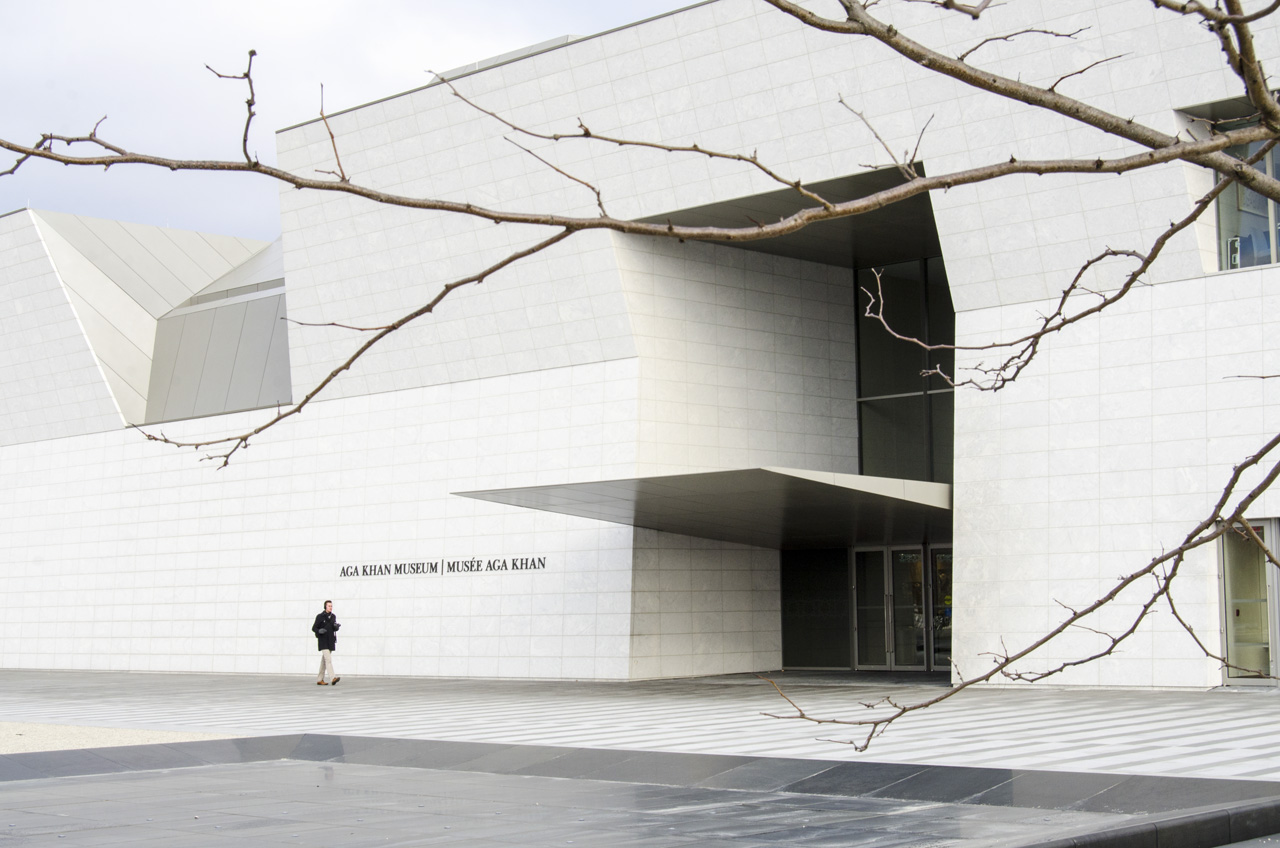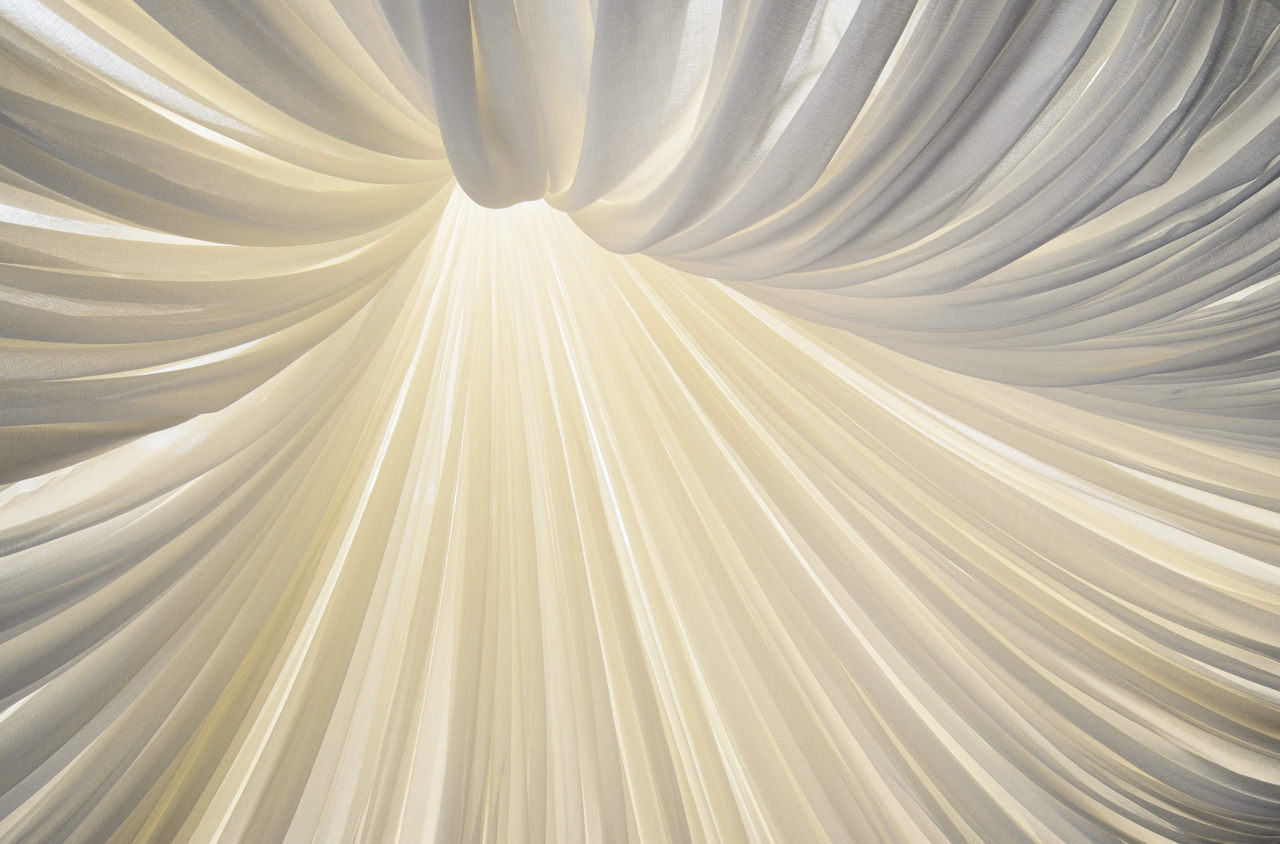 Aga Khan Museum, ceiling design.
Aga Khan Museum, ceiling design.
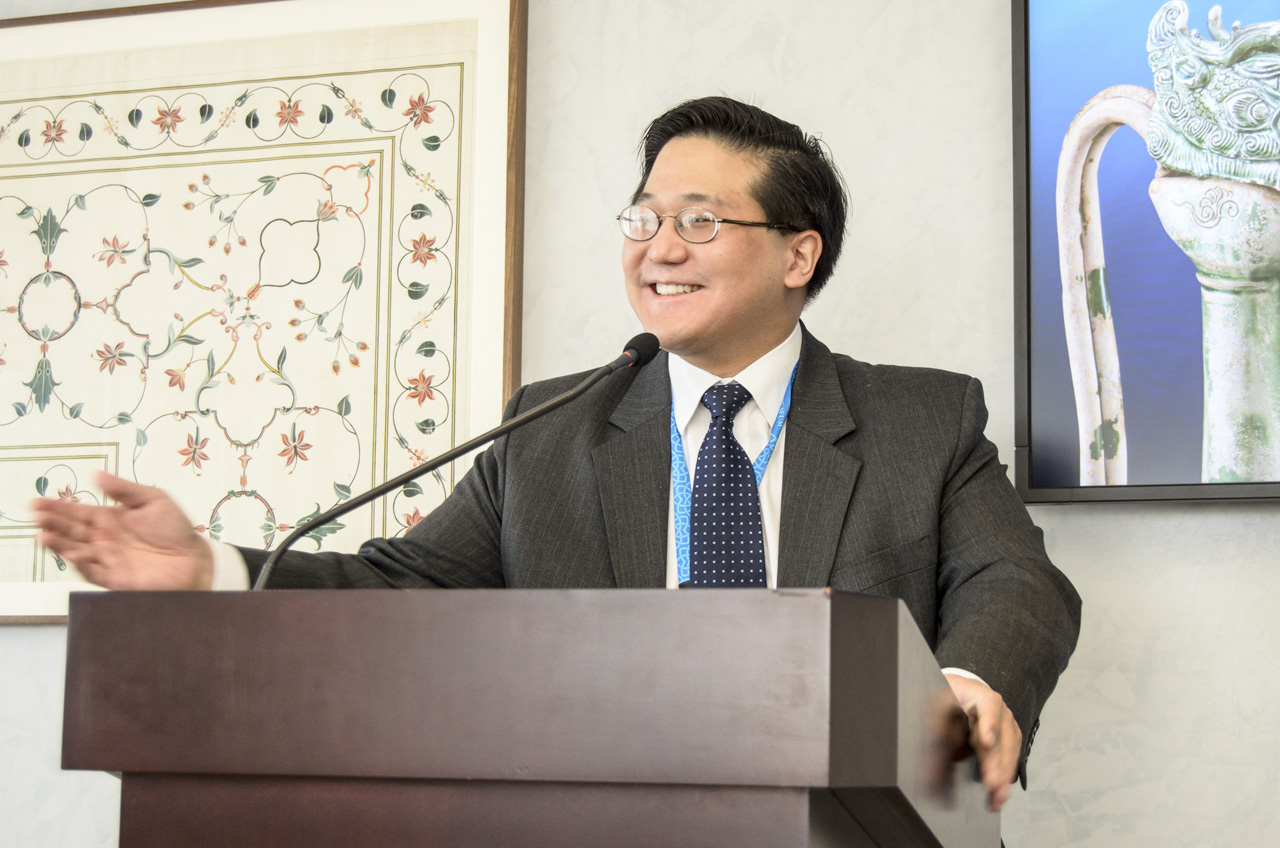 Henry S. Kim, Director and CEO of the Aga Khan Museum.
Henry S. Kim, Director and CEO of the Aga Khan Museum.
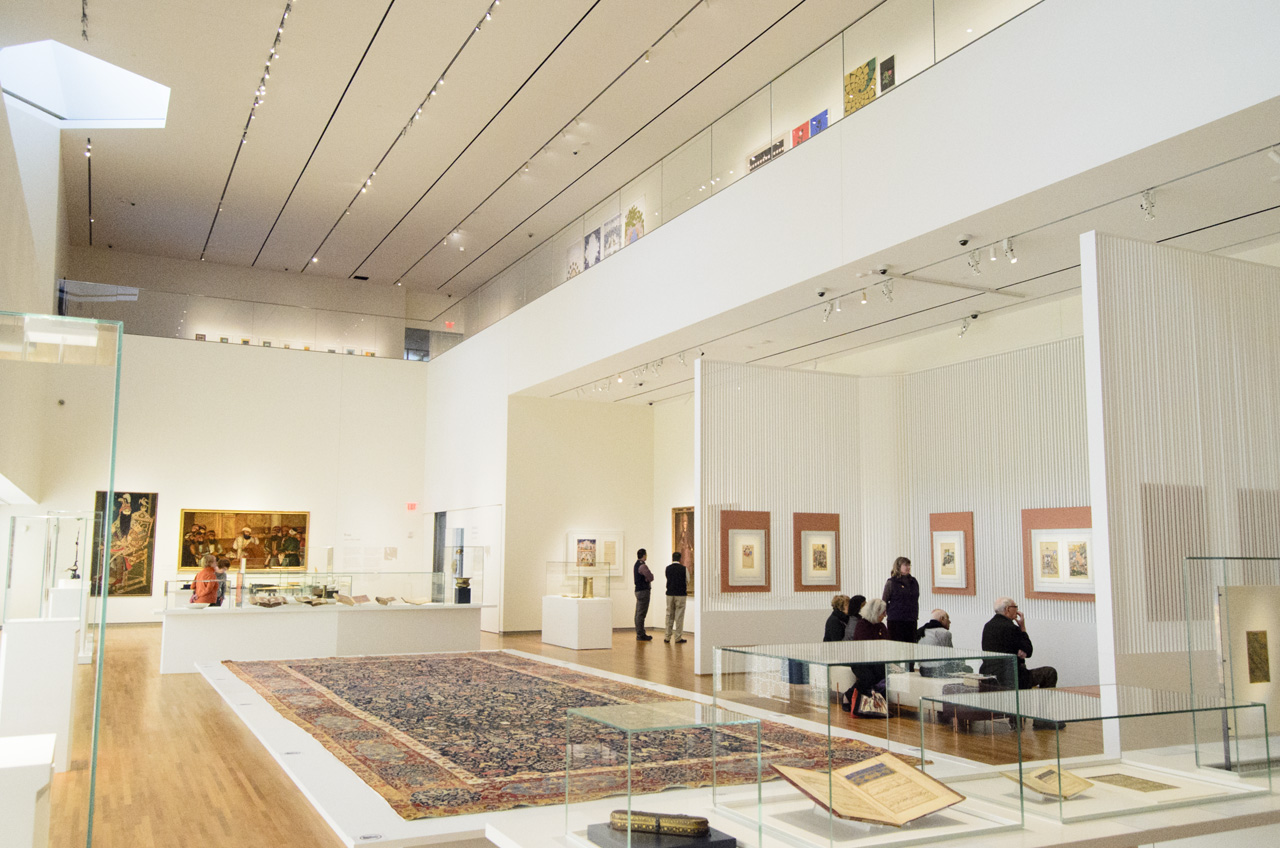 Aga Khan Museum, main exhibition hall.
Aga Khan Museum, main exhibition hall.
The architect Fumihiko Maki, of Maki and Associates, Tokyo, created a majestic building, where architectural elements are echoed by matching window blinds, sophisticated ceiling design and curated wall decorations. Following a request by His Highness the Aga Khan, light is the central feature of the space and of the exhibitions. A rich collection of stunningly decorated and wonderfully preserved illuminated manuscripts is the most unique feature of the museum. The space is activated with contemporary installations by Pakistani artists, part of The Garden of Ideas exhibition.
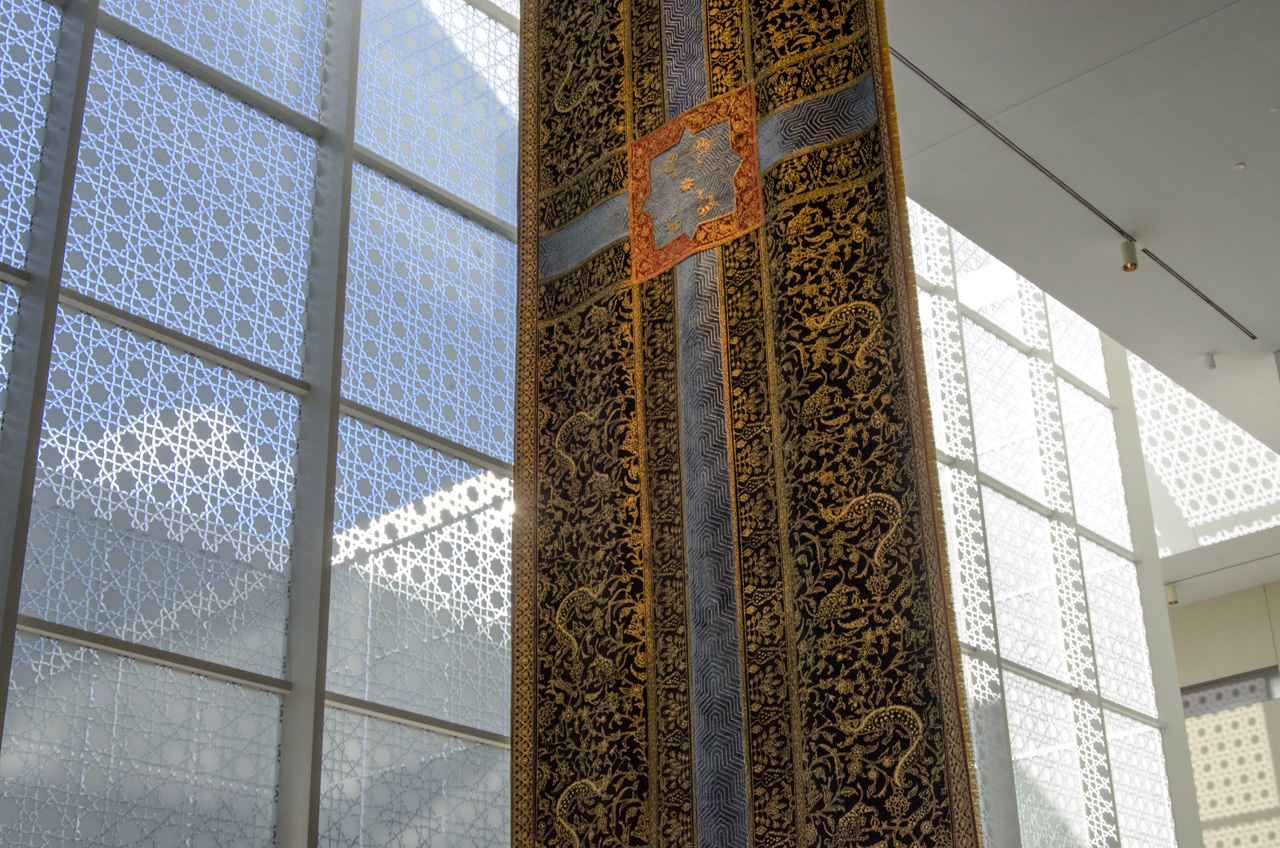 Aisha Khalid, “Your Way Begins on the Other Side“, 2014, installation view.
Aisha Khalid, “Your Way Begins on the Other Side“, 2014, installation view.
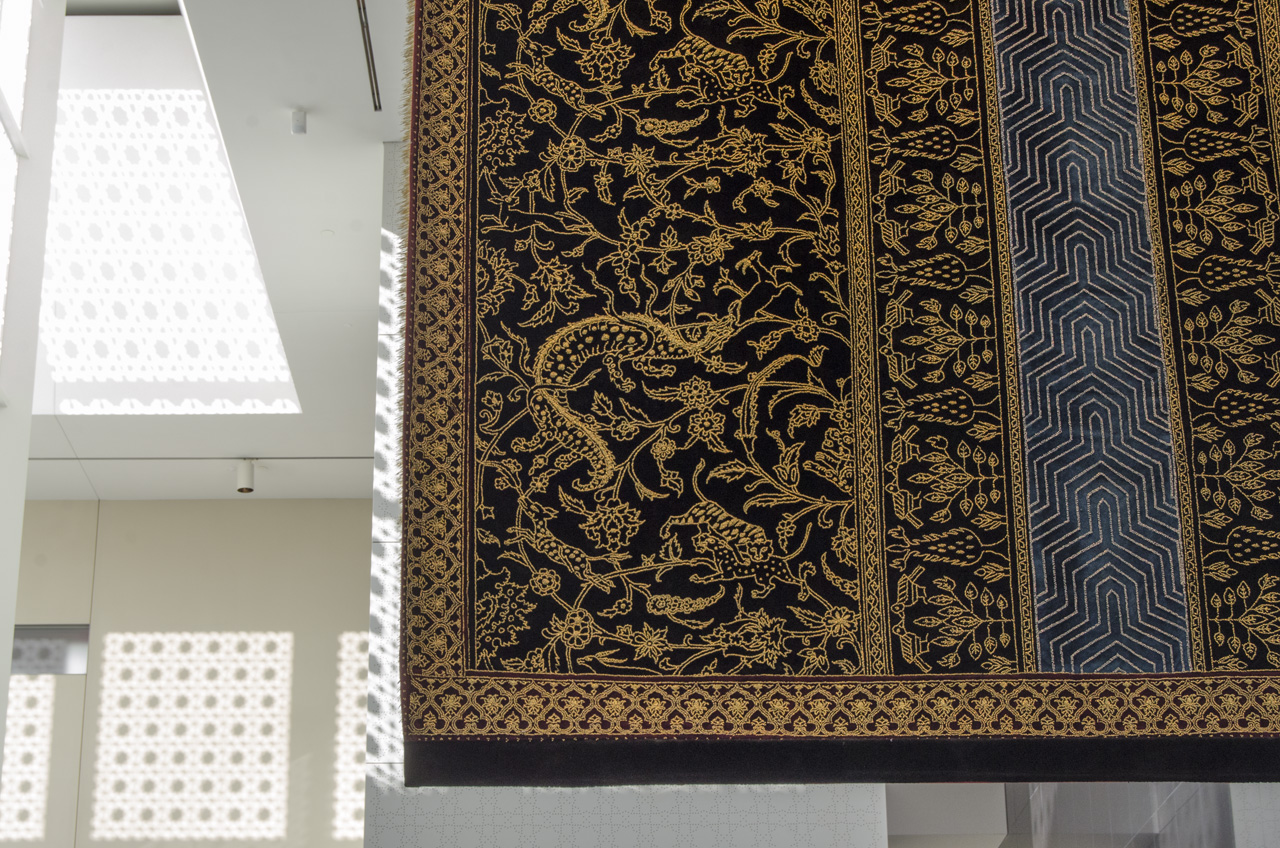 Aisha Khalid, “Your Way Begins on the Other Side”, 2014, detail.
Aisha Khalid, “Your Way Begins on the Other Side”, 2014, detail.
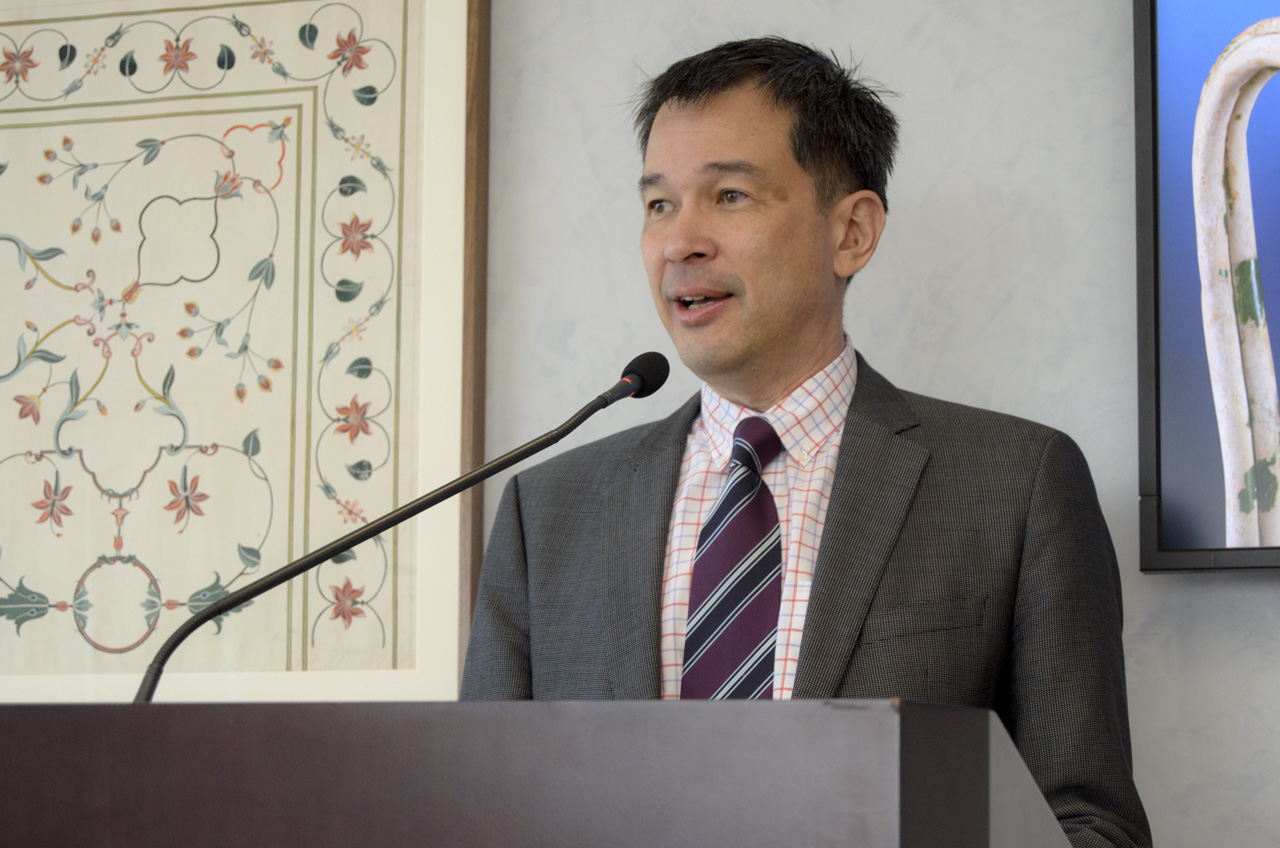 Alan Chong, Director of the Asian Civilizations Museum and the Peranakan Museum.
Alan Chong, Director of the Asian Civilizations Museum and the Peranakan Museum.
From December 13, 2014 to April 26, 2015 the Aga Khan Museum is hosting the North American premiere of The Lost Dhow: A Discovery from the Maritime Silk Route exhibition, from the collection of the Asian Civilizations Museum in Singapore. The ninth-century artifacts, from a ship discovered near the Belitung Island in the Java Sea, are organized around a life-size outline of the boat, which allows appreciating the relatively small space in which the traders and their riches were crammed. The narratives and questions engendered by the display focus on cultural exchange between the Abbasid caliphate and China.
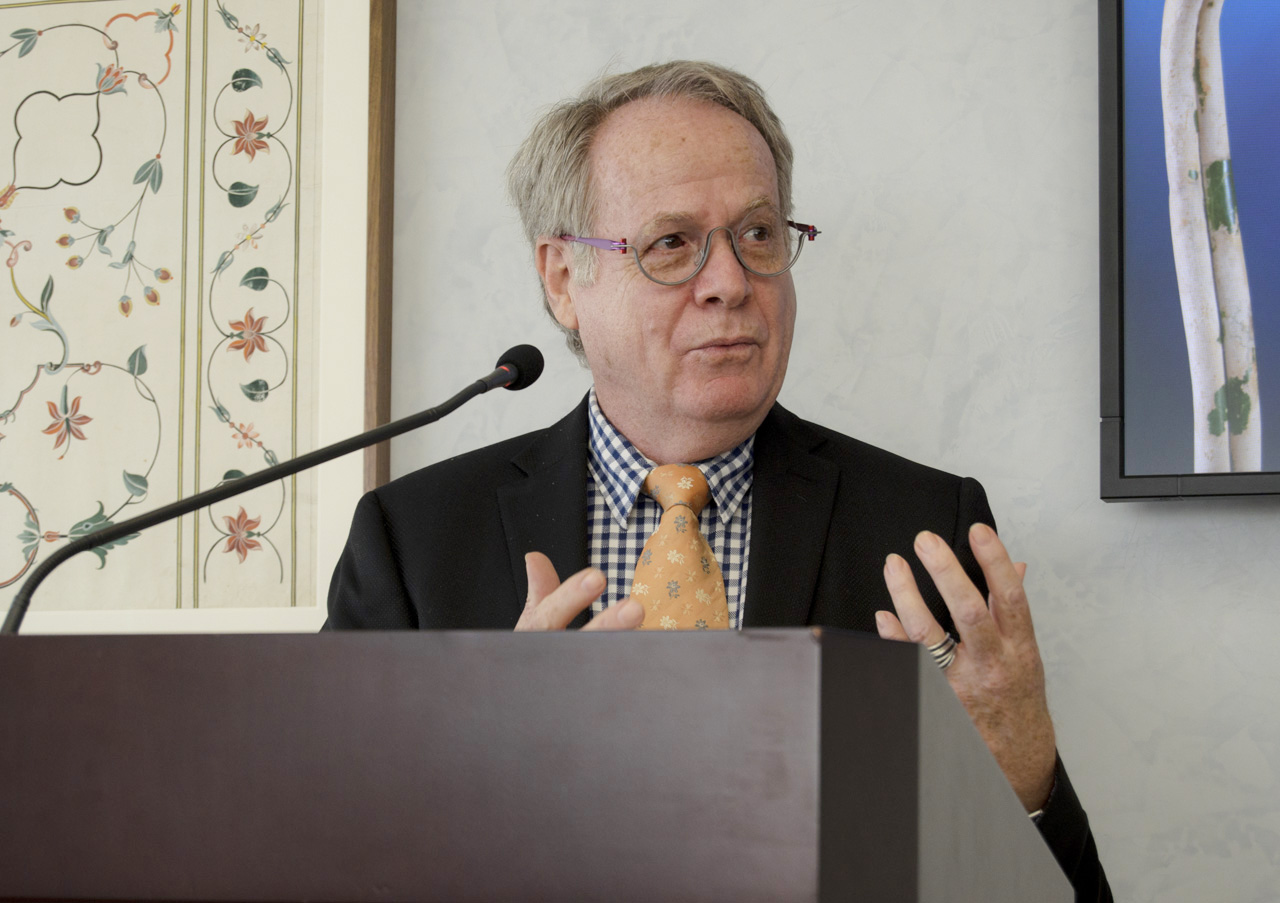 John Vollmer, guest curator of The Lost Dhow exhibition.
John Vollmer, guest curator of The Lost Dhow exhibition.
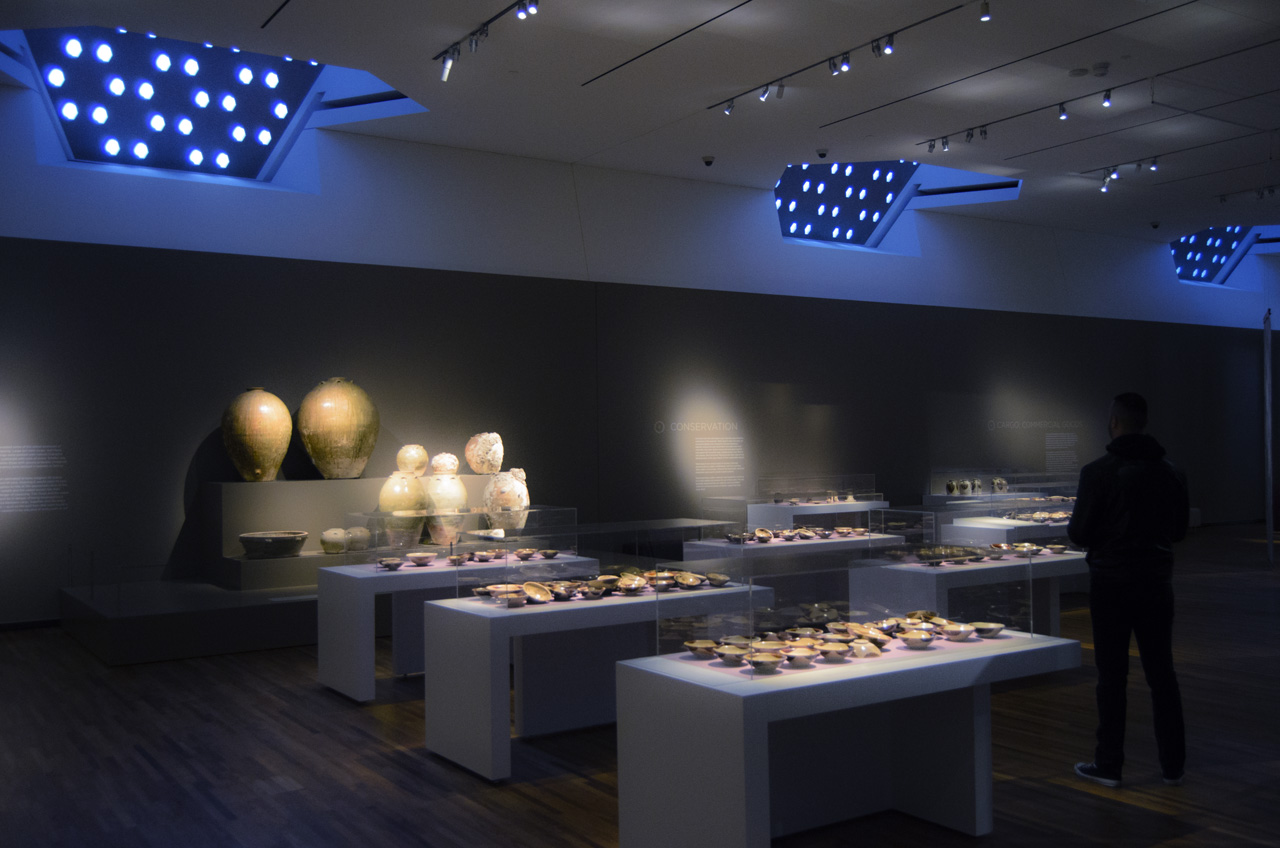 The Lost Dhow, temporary exhibition, installation view.
The Lost Dhow, temporary exhibition, installation view.
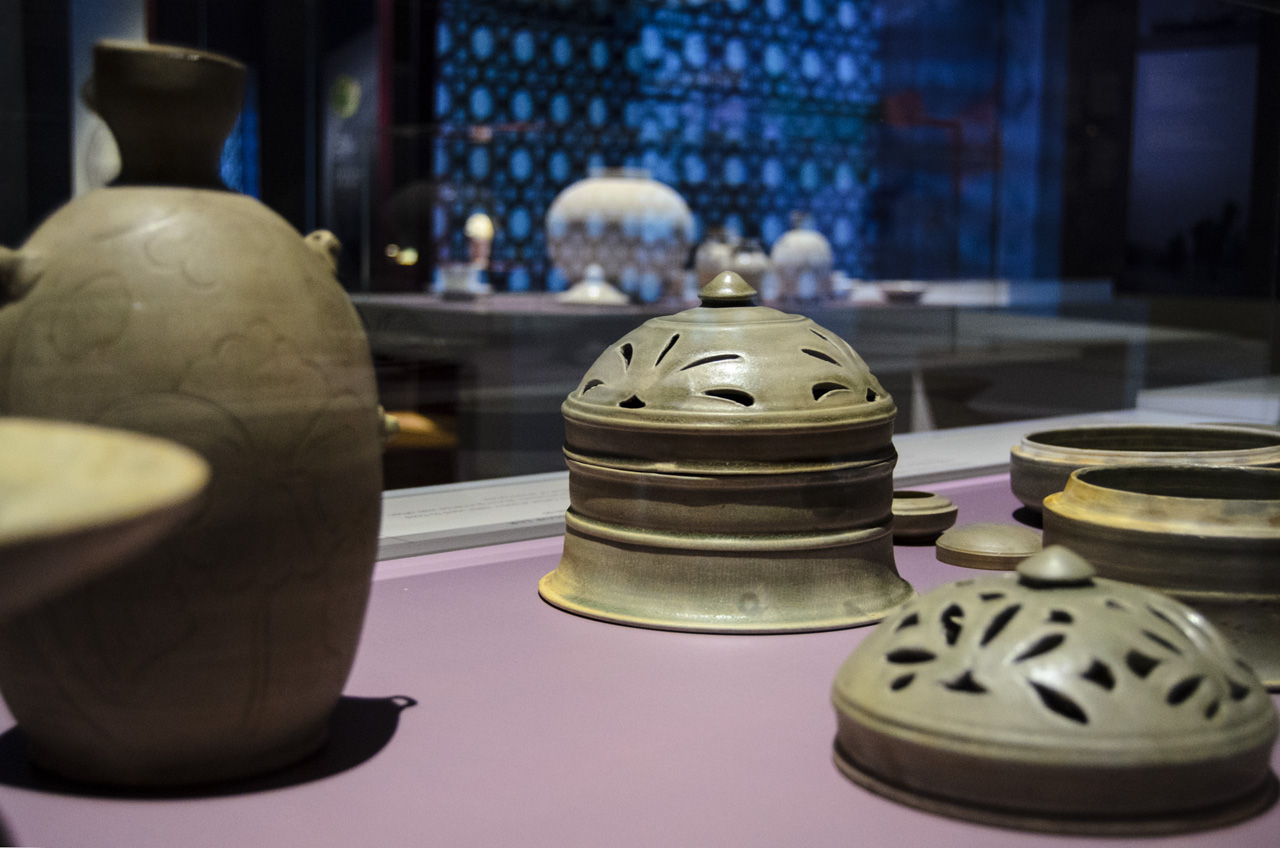 Various artifacts in The Lost Dhow exhibition.
Various artifacts in The Lost Dhow exhibition.
The aesthetic dimension is enhanced with the human story that is revealed through a section dedicated to sailors’ personal items and through the cargo itself, representing the entire spectrum of wealth: from crudely painted clay plates to exquisite gold, silver and bronze objects. Even for dishware which at first glance is prominent for its aesthetic characteristics, the exhibition offers a human perspective, such as with these most peculiar cups, designed for drinking water through a small tube (the water enters the tube through a hole, concealed by the figurines). As the explanatory note indicates, according to a twelfth-century poet Fan Chengda, this way of water dispensing makes the drinking process more pleasant. Was that a rich man’s version of drinking from a straw?
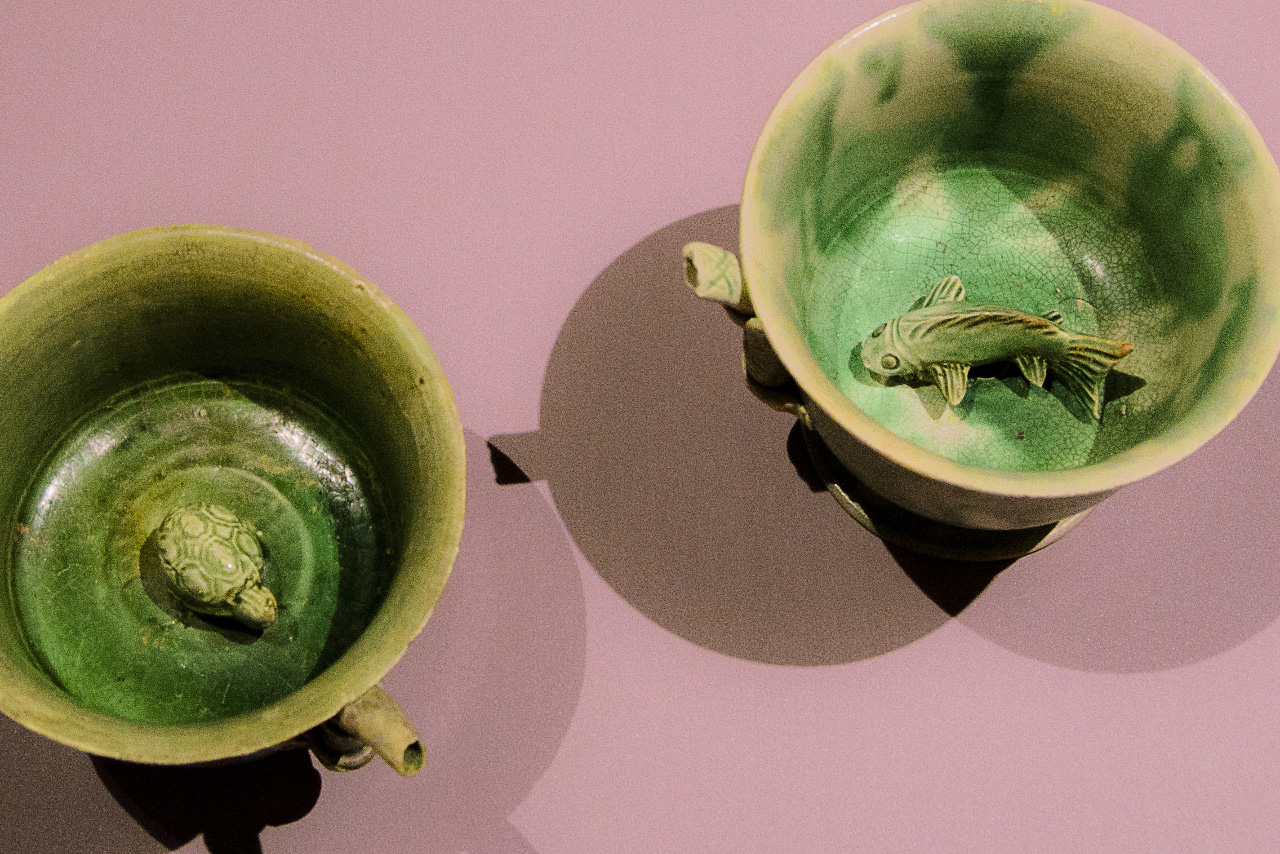 Stem Cups, probably Gongxing kilns, Henan Province, China, 825-50.
Stem Cups, probably Gongxing kilns, Henan Province, China, 825-50.
The temporary exhibition supplements wonderfully the main collection, which dazzles the viewer with finely drawn miniatures, stunning metalwork and various luxury items. The journey generated by the historical artifacts and contemporary artworks is enriched through lectures and artistic events happening at the Aga Khan Museum, of which I would like to highlight the Wu Man and Sanubar Tursun Ensemble’s performances on February 13 and 14, in which the musicians will be exploring the interactions between Chinese and Central Asian cultures, inspired by The Lost Dhow exhibition.
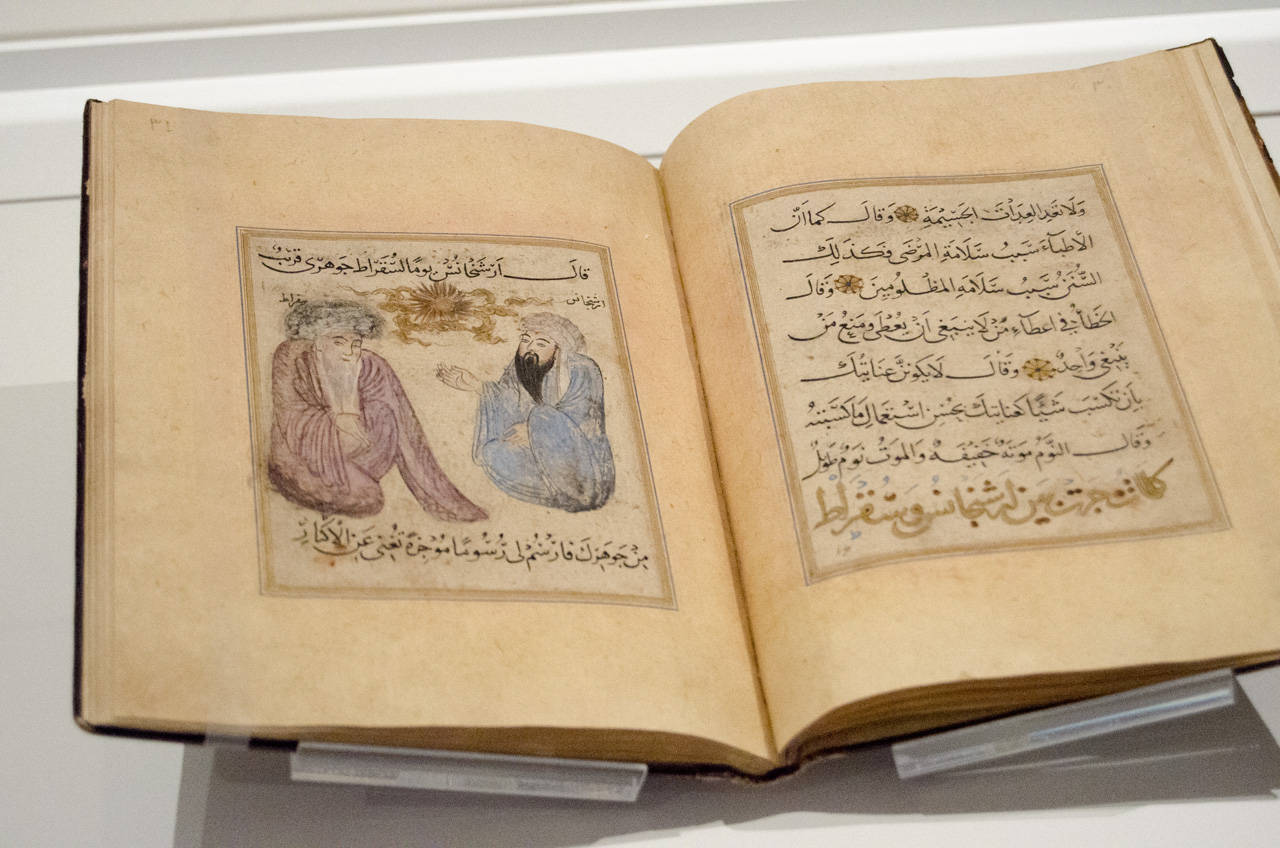 A thirteenth-century manuscript, from the main exhibition.
A thirteenth-century manuscript, from the main exhibition.
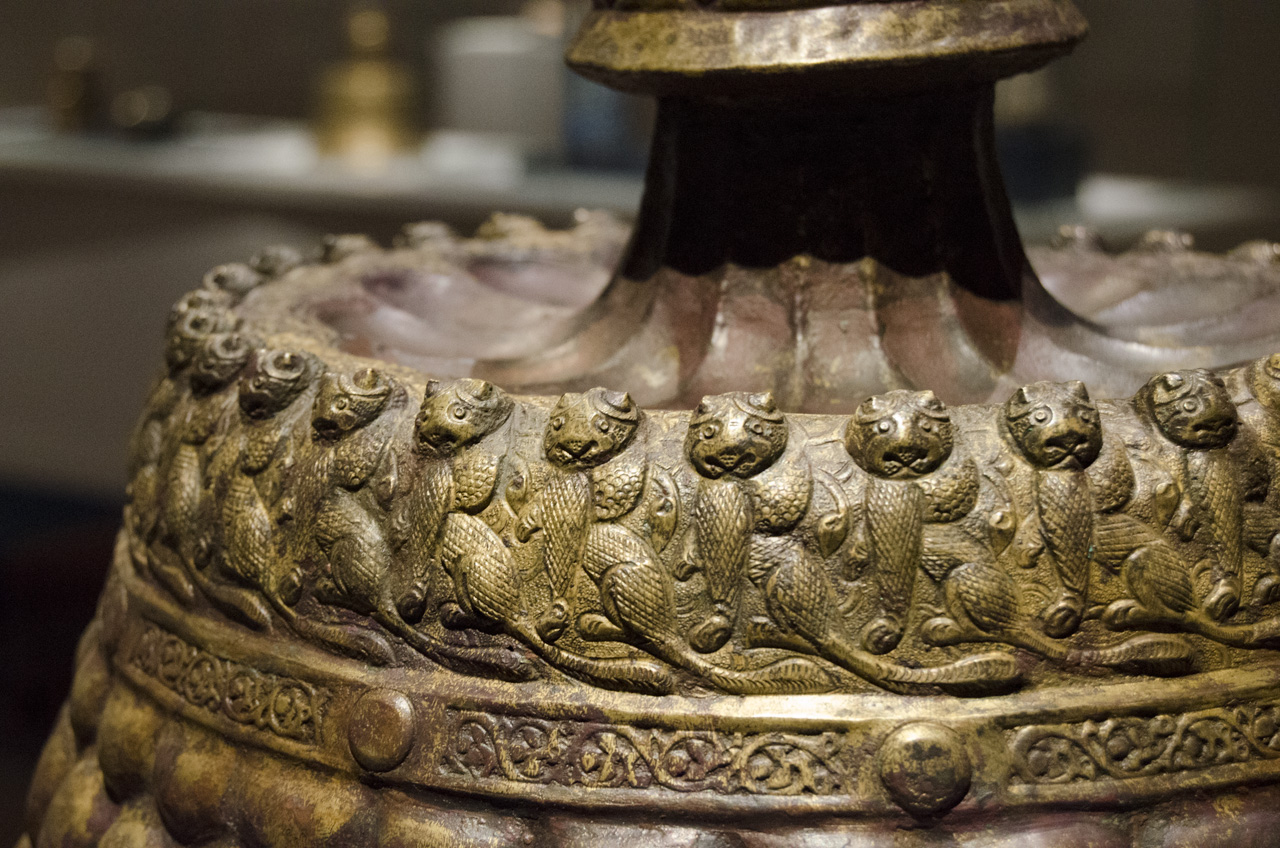 Detail of metalwork, from the main exhibition.
Detail of metalwork, from the main exhibition.
Text and photo: Elena Iourtaeva
*Exhibition information: The Garden of Ideas: contemporary art from Pakistan, September 18, 2014 – January 18, 2015; The Lost Dhow: a discovery from the maritime silk route, December 13, 2014 – April 26, 2015. The Aga Khan Museum, 77 Wynford Drive at Don Mills and Eglinton, Toronto. Museum hours: Tue – Sun, 10 a.m. – 6 p.m.

